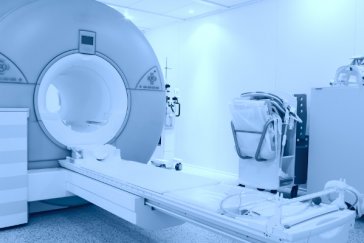A new device has been developed that will allow scientists to create implants that can safely go through MRI machines without harming their owner - and it eerily looks like a person.
Researchers at the University of Waikato in New Zealand have created a human-shaped fish tank that's filled with jelly, and they're sticking implants into it in order to create medical devices that can travel through MRI machines.
Right now, people with implants such as pacemakers, cochlear implants and spinal cord pain relief implants, can't go near an MRI machine due to its magnetic force. Not only does it risk pulling their implants out, it also has 10 times the radio frequency of a microwave oven, and can cook tissue surrounding any devices containing an electrode in the body.
However, MRIs are an important part of diagnosing diseases such as cancer, so right now scientists are urgently trying to develop devices that will help doctors to better treat patients with implants. That's where this human fish tank, named the phantom case, comes in.
"So many people are fitted with medical equipment such as spinal cord, deep brain and cochlear implants and pacemakers, but if you have one of these devices, you can't go into an MRI machine because of the electromagnetic and magnetic risks," said engineering professor Jonathan Scott from the University of Waikato in a press release. "Our goal is to find a non-magnetic material for the electrode that that won't be affected by the [radio frequency] fields."
Scott became involved in the project after hearing about recipients of spinal cord implants who couldn't undergo potentially life-saving MRI scans.
"I'd never heard of this before," said Scott in the release. "They told me they'd love to be able to use electrodes that were MRI-safe, but that nothing like this had been developed before. I knew I just had to follow that up."
But even if someone had come up with alternatives to today's electrodes, there was a problem in getting them approved for use - how would you test them without risking cooking human tissue?
Scott and PhD student Steven McCabe have now solved this problem by creating the phantom case (pictured with them below). It's filled with a phosphate-buffered saline jelly, which responds to MRI scan the same way as human flesh.
 Image: University of Waikato
Image: University of Waikato
This means that the phantom case can have implants inserted into it and then undergo MRI scanned, and the resulting damage or heat stress on the surrounding tissue can be measured.
The team is now working the University of Waikato's Science and Engineering Workshop to develop a range of electrode prototypes, which they'll soon begin testing.
"We will try out a number of ideas in the hope of finding something that works, something that has a clever twist to it. We're very excited about being involved in solving this problem as it will open up MRI scans for people who can't have them at the moment," said Scott.
Want to use science and engineering to solve global problems? Find out more about studying at the University of Waikato.
